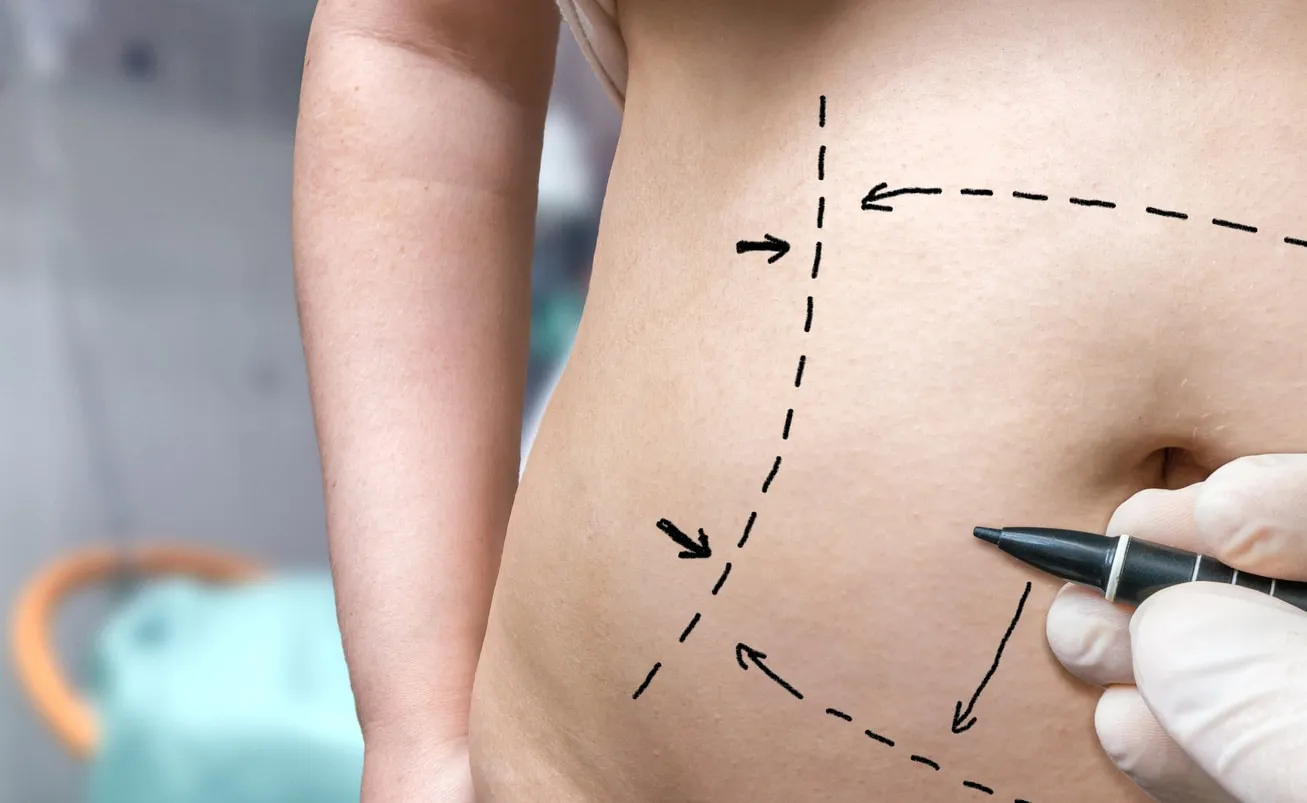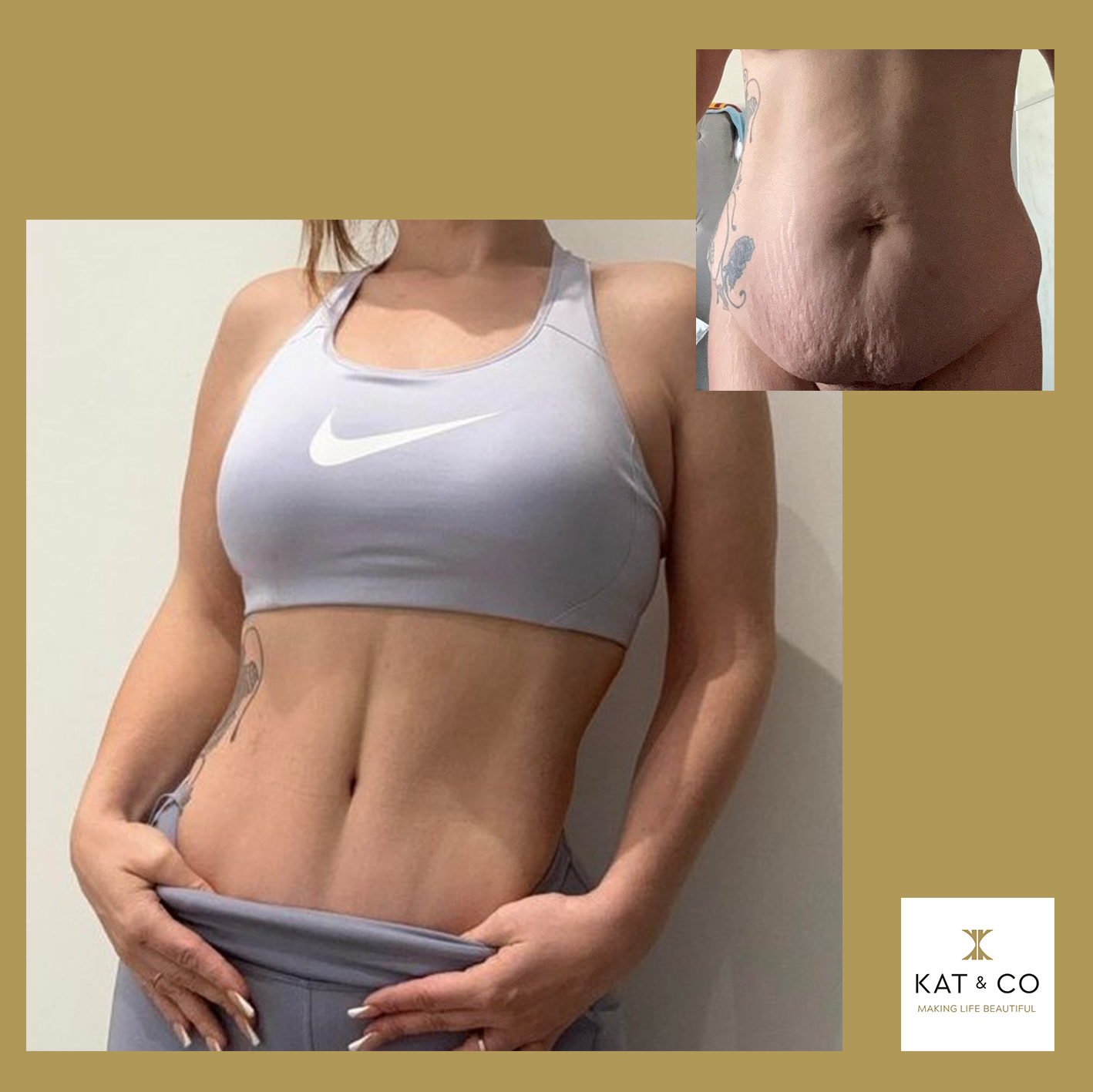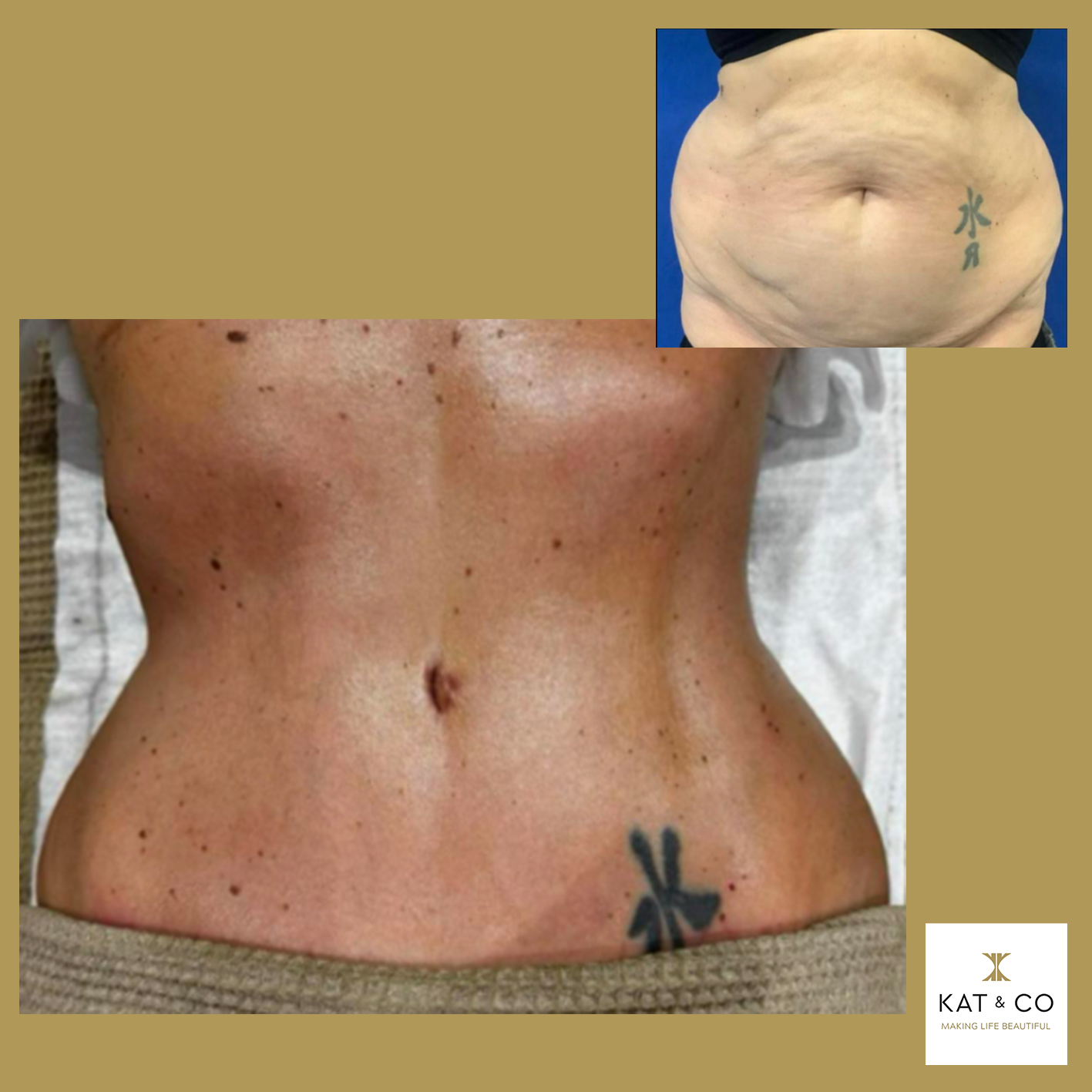


Procedure Before/After Fees Post-Operative Instructions Consultants Testimonials Frequently Asked Questions
A tummy tuck, also known medically as abdominoplasty, is a surgical procedure designed to improve the shape and appearance of the abdomen.During the procedure, a surgeon removes excess skin and fat from the stomach area. The connective tissue (fascia) may be tightened with sutures to narrow the waistline, and if the abdominal muscles have separated—a condition called rectus diastasis—these muscles can be brought back together. The remaining skin is then repositioned to create a flatter, more toned appearance. In many cases, liposuction is also performed to enhance contouring across the entire abdominal area.A tummy tuck may be recommended if you have extra fat or loose skin around your midsection, or if your stomach protrudes due to separated abdominal muscles. Tightening the core muscles can sometimes improve lower back pain while also enhancing your body confidence and overall appearance.
There are several reasons why extra fat, loose skin, or weakened connective tissue may develop in the abdomen, including:
A tummy tuck can address these issues by removing excess skin and fat, repairing rectus diastasis (where the abdominal muscles have separated), and tightening weakened connective tissue, known as fascia. In some cases, stretch marks and extra skin in the lower abdomen below the belly button may also be removed.
For those who have had a C-section, the existing scar can often be incorporated into the new tummy tuck incision, improving the overall appearance.
A tummy tuck can also be combined with other body contouring procedures, such as breast surgery or the removal of excess skin from areas like the arms or thighs, to enhance overall body shape.

However, a tummy tuck is not suitable for everyone. Your plastic surgeon may advise against the procedure if you:
A tummy tuck, like any major surgery, carries potential risks, including:
Other general surgical risks include bleeding, pain, infection, and adverse reactions to anesthesia.
The lock and glue tummy tuck or lipoabdominoplasty is an innovative approach combining internal locking stitches, tissue glue and local anaesthetic infusion pumps without the use of drains ( tubes left within the abdominal wound to drain excess blood and body fluids) which we use for all our tummy tuck patients.
The result is greater comfort for the patients, earlier mobilisation, earlier discharge and less risk of complications. The quilting and liposuction is effective in creating a more athletic looking abdomen with greater definitions.
2 - 2.5 hours
Twilight Anaesthesia or TIVA (Total Intravenous Anaesthesia)
Daycase or 1 Night Stay
7-14 days
Bruising, swelling, temporary numbness, temporary skin irregularity, fluid collection, delayed wound healing of umbilicus
Infection, excessive scarring, asymmetry, bleeding, permanent numbness, delayed wound healing, skin tags at end of scar, fat necrosis, skin necrosis
1 week, 2 weeks, 3 months (after surgery)
2 - 3 weeks
2 weeks - walking 6 weeks - everything except sit-ups and swimming 12 weeks - everything
12 weeks until final result. Scars continue to improve over 18 months








A mini tummy tuck starts from £6,044. Please get in touch to confirm your fee. All patients will require a consultation prior to surgery to assess your individual requirements and desires.
Mini tummy tuck
From £6,998
Lock & glue tummy tuck
From £10,498
Apronectomy
From £11,840
A tummy tuck is usually performed in a hospital or surgical center under general anesthesia, which keeps you asleep and pain-free throughout the procedure.
The exact technique your surgeon uses depends on your goals and the extent of correction needed. In a typical tummy tuck:
The length and placement of incisions vary depending on how much skin is removed and the type of tummy tuck performed.
The main incision is usually located just above the pubic area, within the swimsuit line, leaving a discreet, well-concealed scar.
You may also receive antibiotics during surgery to reduce the risk of infection. Most tummy tuck procedures take under four hours to complete.
After surgery, your incisions will be covered with dressings, and small drains may be placed to remove excess fluid.
Recovery highlights:
Activity guidelines:
Returning to daily life:
Yes. A tummy tuck is not a weight-loss procedure. Ideal candidates are:
If you are significantly overweight, your surgeon may recommend losing weight first to reduce surgical risks and achieve optimal results.
A tummy tuck can remove stretch marks only if they are on the skin that is excised, usually below the belly button. Stretch marks above the navel will remain but may appear less noticeable after the skin is tightened.
You should only resume driving once:
Typical timelines:
Always follow your surgeon’s guidance and confirm with your insurance provider before driving.
To protect your healing tummy:
Avoid sleeping on your side or stomach until your surgeon confirms it’s safe—usually a few weeks after surgery, depending on the procedure.
Tummy tuck results are long-lasting, especially if you:
While natural ageing may affect skin tone over time, improvements to your shape, core strength, and posture often last for many years.
Yes, all tummy tuck procedures leave some scarring. The location and size depend on the type of surgery:
Scars are permanent but typically fade over 12–18 months. Proper wound care and gentle massage can help improve their appearance.
Yes, a tummy tuck does not affect fertility. However, a future pregnancy can stretch your abdominal muscles and skin, which may impact your surgical results. Most surgeons recommend waiting until you’ve finished having children before undergoing the procedure.
The duration of your surgery depends on the type of abdominoplasty:
